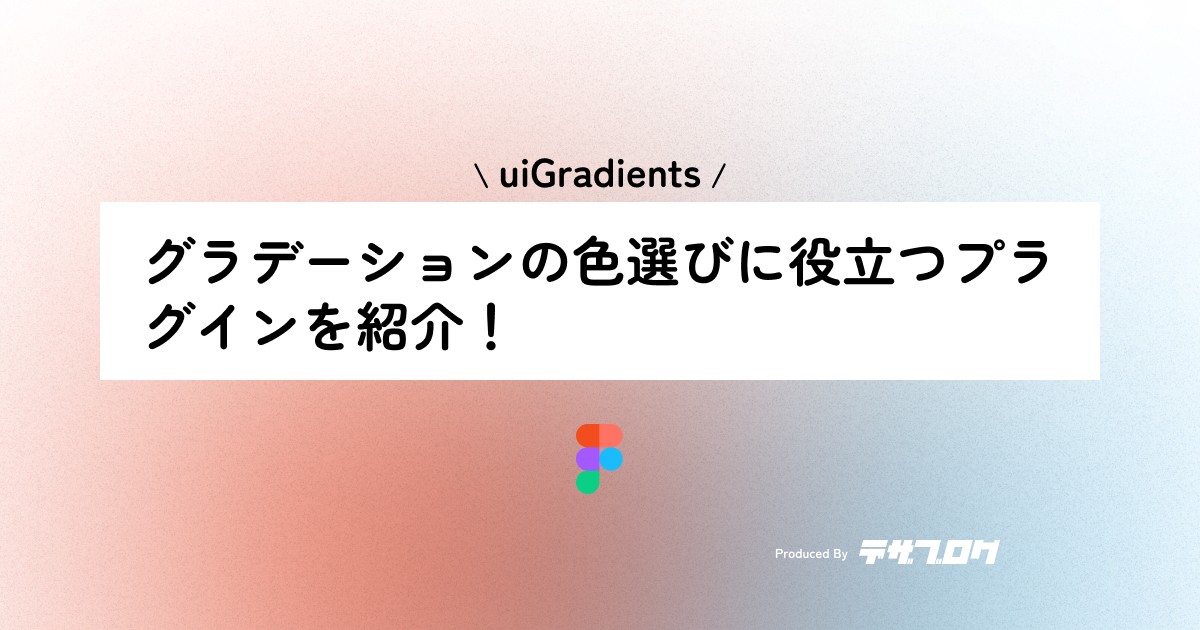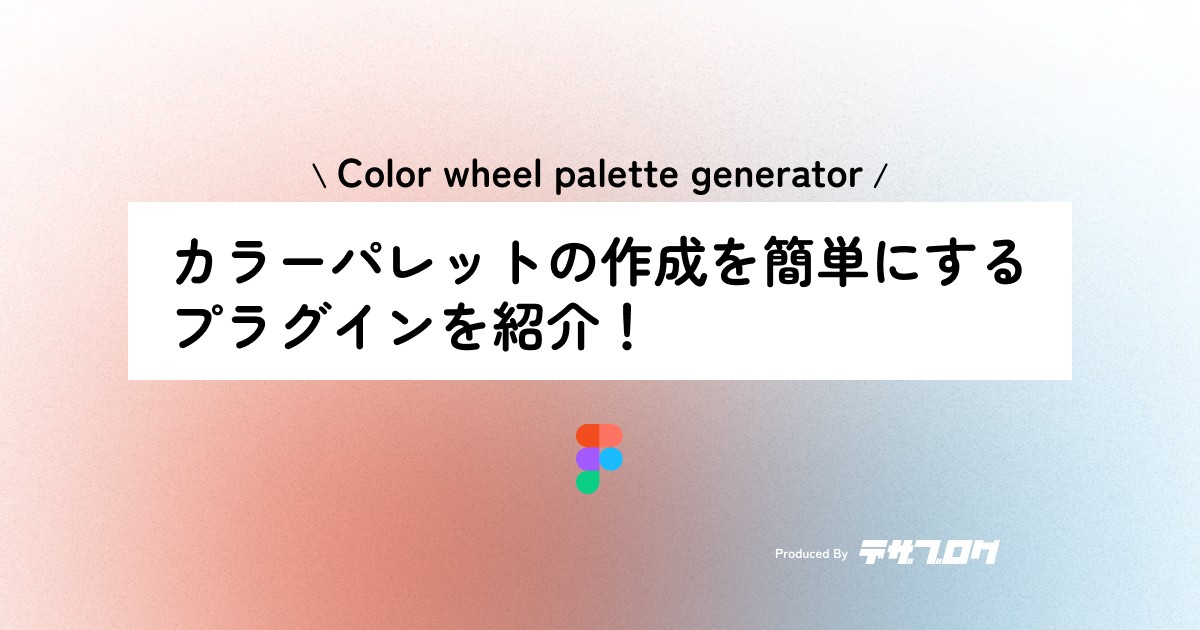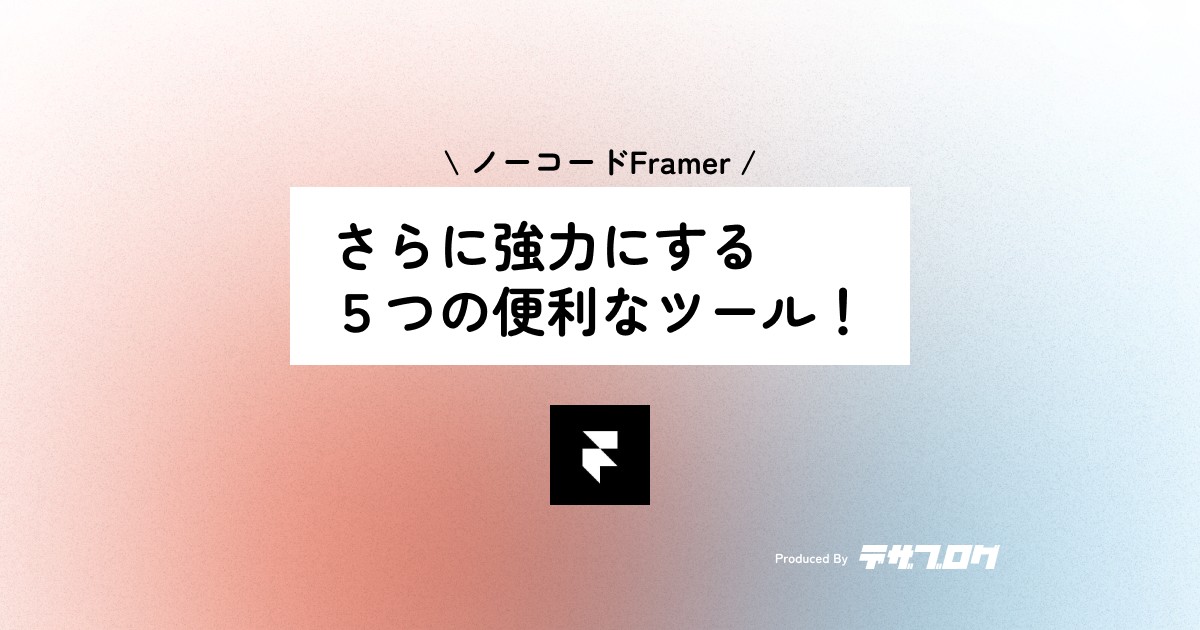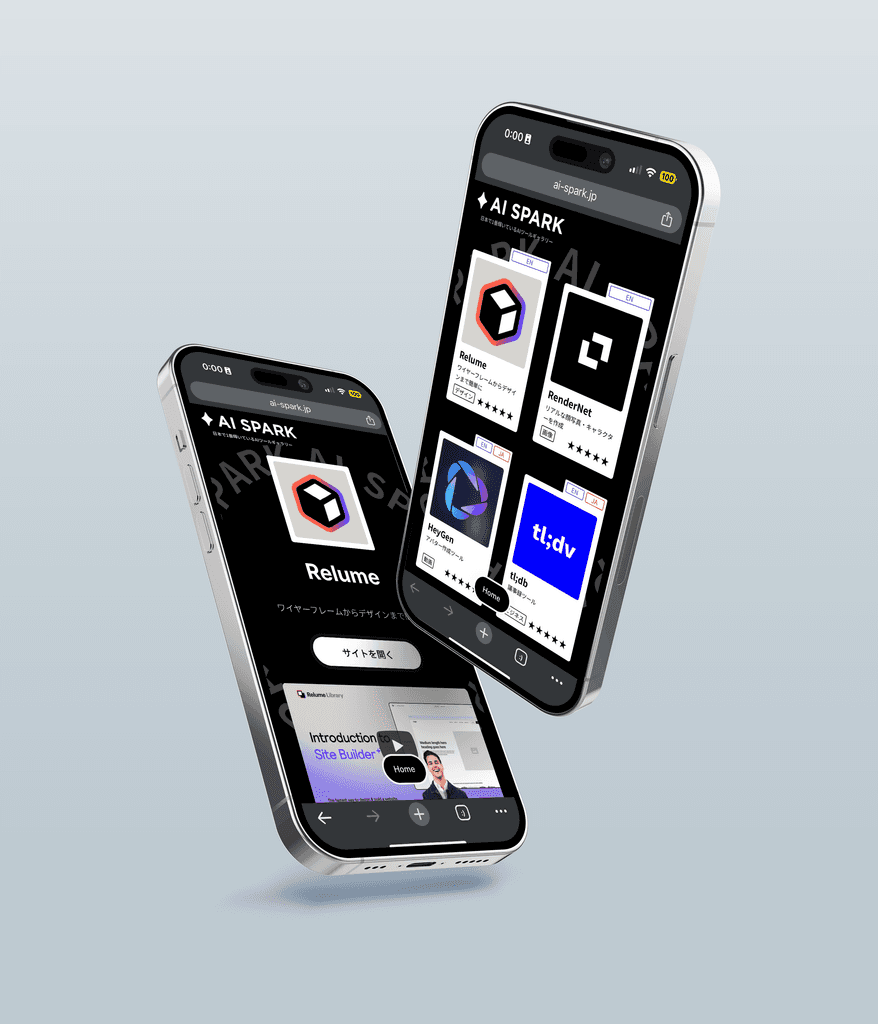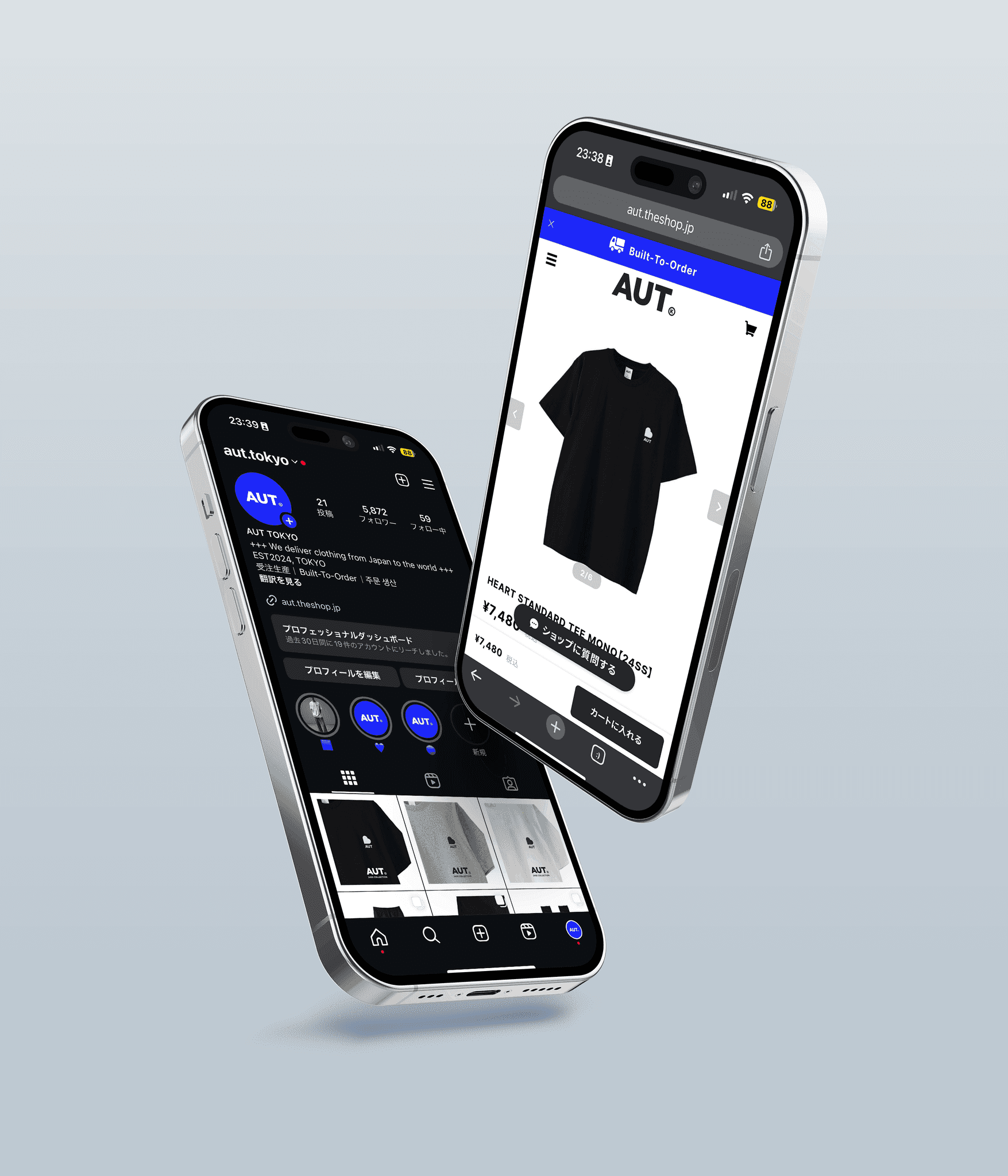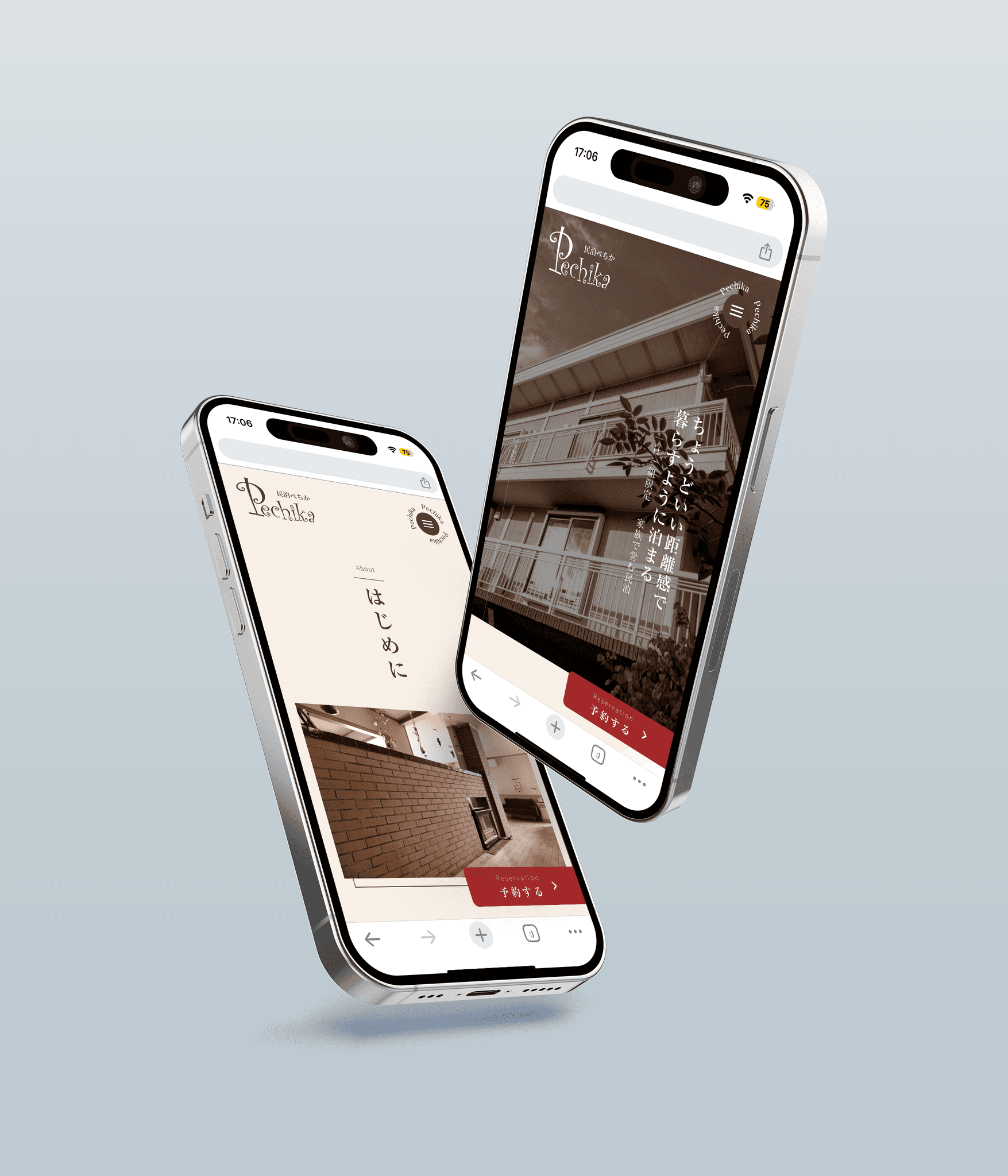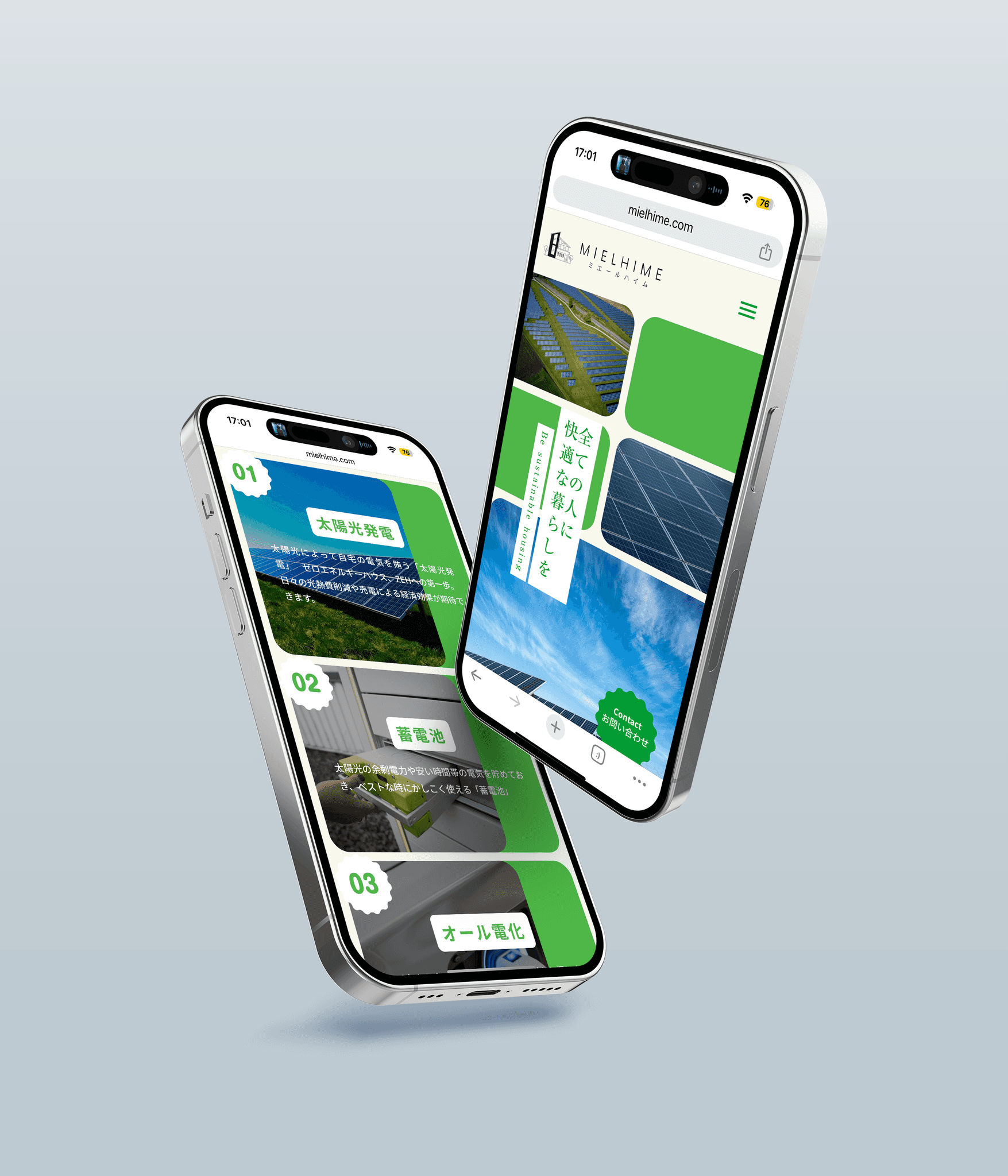Introduction to the plugin "Webgradients" that is helpful when creating gradient color schemes in Figma.
Figma
2024/09/23
To enhance the charm of the design, selecting colors is very important!
However, it can often be confusing as to which colors to choose.
Especially when using gradients, the choice of which colors to combine can significantly change the overall impression.
If the color combination is successful, the design will stand out even more, but,
if it fails, the carefully crafted design may be ruined...
Therefore, I will introduce how to efficiently create beautiful gradients using the Figma plugin 'Webgradients'.
By utilizing these tools, your design will surely shine even more!
Color combinations are difficult...
When designing, isn't considering color combinations often the most challenging part?
Just thinking about which colors match and what kind of atmosphere it will create can be tough.
A slight combination can greatly change the overall impression, and if you fail, the design you worked hard on can be ruined...
Furthermore, understanding elements such as hue, saturation, and brightness, and figuring out how to combine them is,
particularly a difficult task for beginners.
Additionally, when trying to incorporate gradients, the number of colors to choose from increases, making it more complex.
You need to consider not only color selection but also color placement and transitions,
so it's not uncommon for the working time to increase significantly.
With the plugin I'm introducing this time, you can intuitively solve those concerns!
About Webgradients
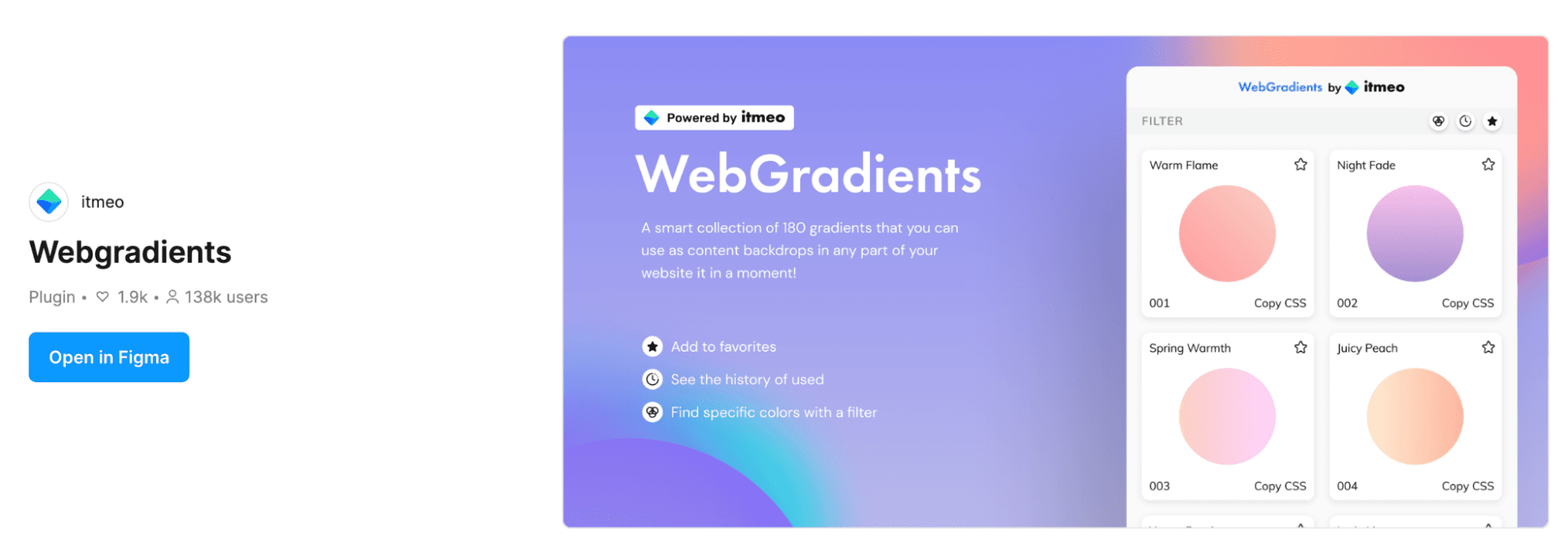
'Webgradients' is a plugin for Figma, a tool that easily provides various beautiful gradients.
You can also adjust the colors to your liking or create new gradients. It allows for intuitive operation,
where about 180 types of gradients are typically available.
By simply selecting your favorite from the gradient library, you can easily incorporate it into your design.
Moreover, since you can adjust colors to your liking or create new gradients,
it is easy to use intuitively, making it attractive even for beginners.
It is indeed a powerful support plugin that enhances designs even further!
How to use 'Webgradients'
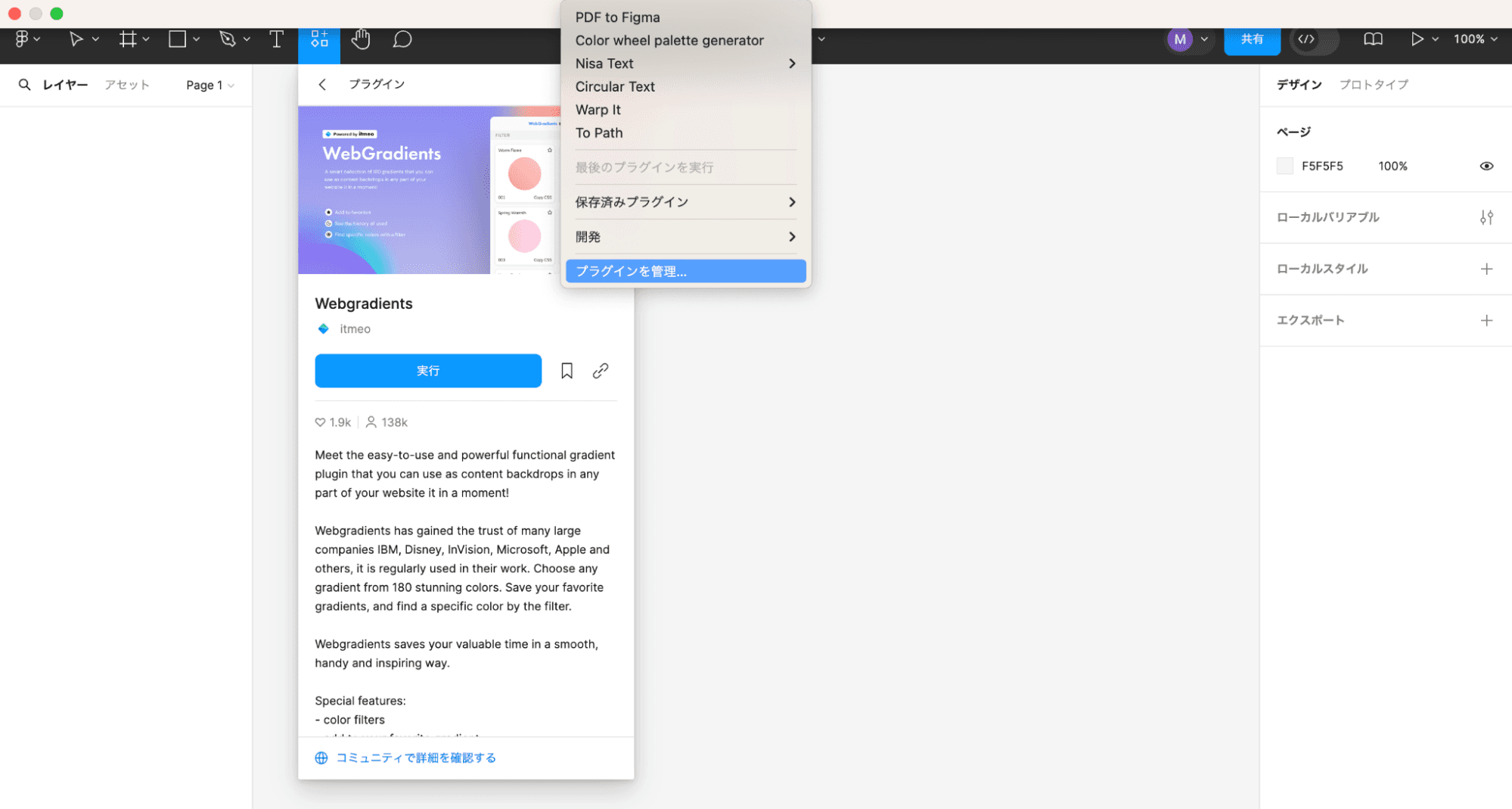
First, select 'Manage Plugins' from the 'Plugins' menu in the toolbar.
Next, enter 'Webgradients' in the search bar, and when you find the plugin, click 'Run'.
You can also run it from the Figma community below. https://www.figma.com/community/plugin/802147585857776440/webgradients
Then, about 180 gradients available in 'Webgradients' will be displayed.

By clicking on the color filter icon, you can find gradients categorized by main colors.

Now, let's actually incorporate it into the design!
There are two ways to utilize it.
Retrieve with CSS code
Directly reflect in shapes within Figma
If you choose 'Retrieve with CSS code',
click 'Copy CSS' for the gradient you wish to use.
Then, the CSS code will be automatically copied. The code will look like the following format.
linear-gradient(120deg, #a1c4fd 0%, #c2e9fb 100%)
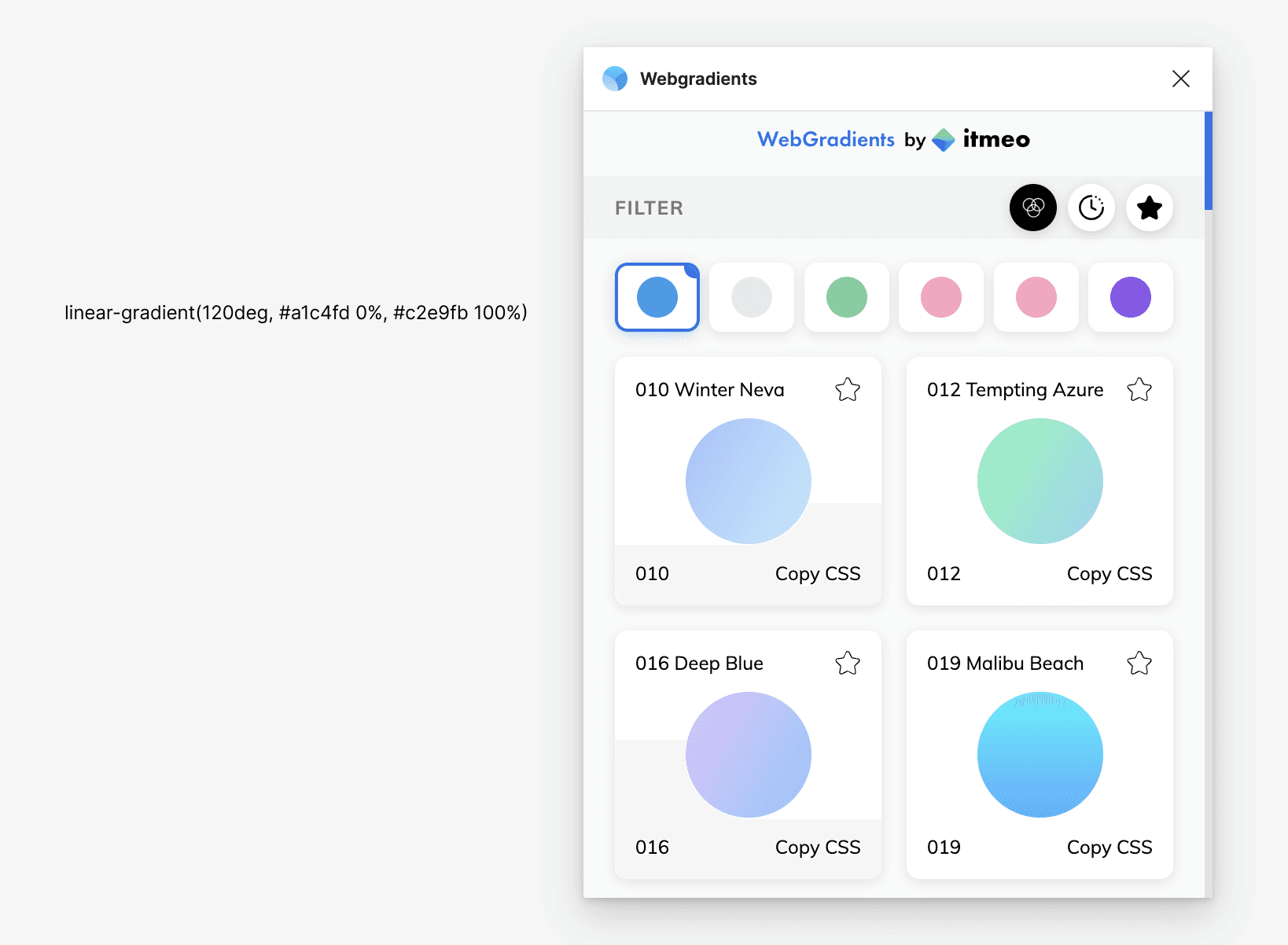
This CSS code makes it easy to specify colors when building a website.
Especially when doing front-end development,
it saves you time looking up color codes and allows you to work smoothly.
Supplement on the linear-gradient() function in CSS
The linear-gradient() function in CSS generates a linear gradient (linear gradient) that changes along a virtual line with two or more colors.
The generated gradient is treated as an object of the <gradient> data type, which is a special type of <image>.
To create a linear gradient, you need to specify at least the 'start color' and 'end color'. You can also specify the direction or angle of the gradient, color ratios, and the position of the gradient. The number of colors you can use is unlimited.
If you want to 'directly reflect' in shapes within Figma, first select any shape within Figma.
Then, tap the desired gradient color, and the shape's color will automatically change.

When creating advertisement designs in Figma, you can intuitively apply gradients, and the process is very simple, which makes it very useful.
You can use 'Webgradients' here
Additionally, 'Webgradients' not only has a plugin for Figma but also a website!
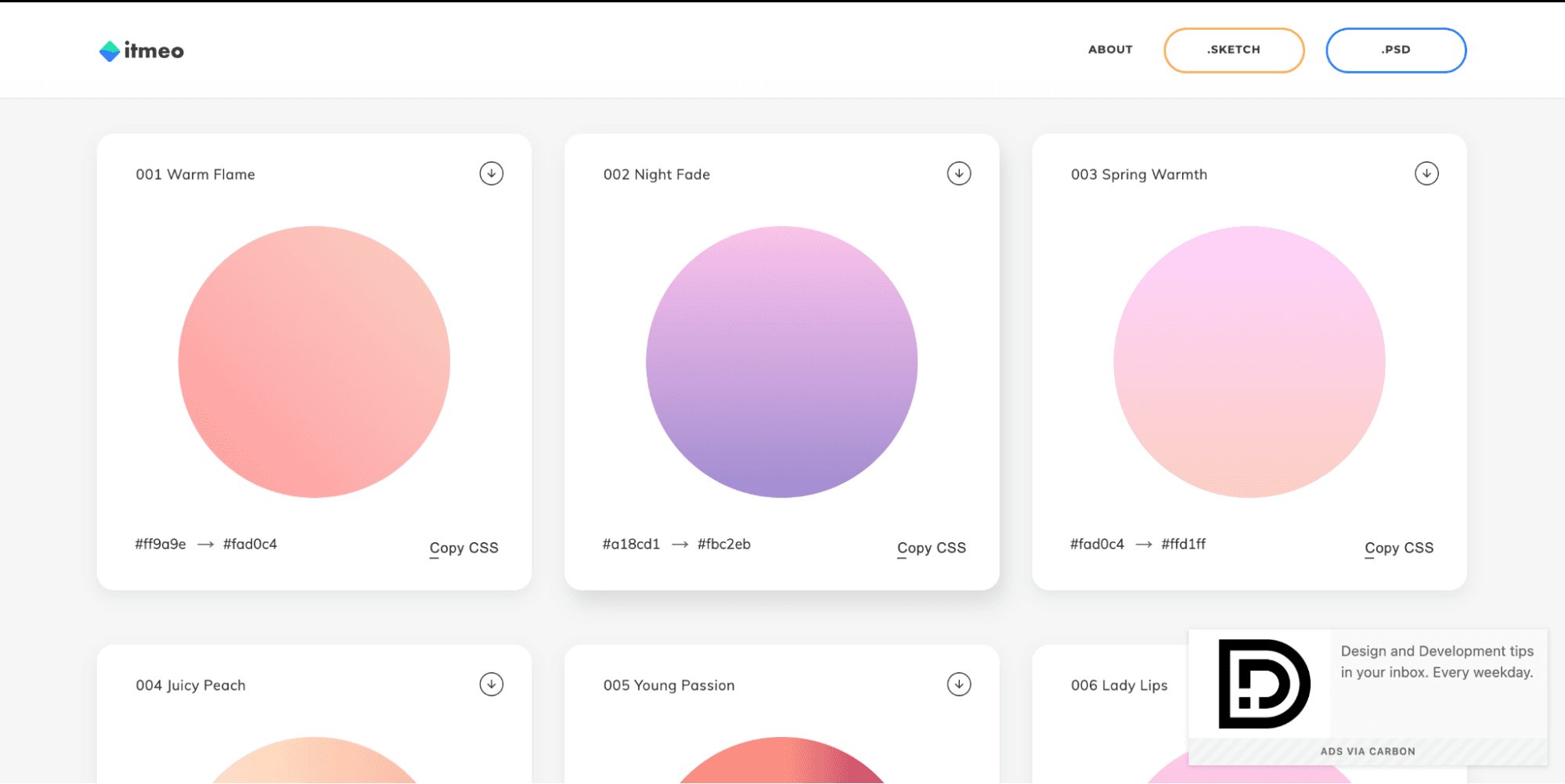
On this website, you can download the desired gradient in image format.
Please check this out as well.
The Webgradients website is here
Scenarios for using Webgradients
'Webgradients' is useful in various projects!
Now, let's introduce the scenes where it can be helpful.
1. Website backgrounds
By using gradients for website backgrounds, you can achieve visually appealing designs.
For example, using gradients for the background on landing pages and portfolio sites can attract customers' attention.
With 'Webgradients', you can create a background gradient that fits your image in an instant without complicated color selection!
2. Button and card design
Using gradients in the design of buttons and cards can create a greater sense of dimension.
In particular, the visual impact of call-to-action (CTA) buttons is crucial.
By using 'Webgradients' to create eye-catching button designs,
you can also increase user engagement rates!
3. Decorating illustrations and icons
Add gradients to illustrations and icons to give depth to the overall design.
Especially by incorporating gradients into flat design, you can convey a more modern and sophisticated impression.
By using 'Webgradients', you can easily upgrade your design without worrying about color combinations!
4. Prototype production
Prototyping is important in Figma, and incorporating gradients into prototypes can enable more effective design expression.
By using 'Webgradients', you can intuitively and easily apply gradients,
making it possible to propose attractive prototypes to clients and team members!
Let's create attractive designs efficiently with Webgradients!
What do you think?
The 'Webgradients' plugin for Figma is a powerful tool for color combinations in design.
'Webgradients' allows you to intuitively apply gradients, and the process is very simple.
By using this plugin, you can not only enhance the quality of your designs,
but also easily retrieve CSS codes and reflect them in shapes within Figma, significantly improving work efficiency.
Please take advantage of this plugin to enhance your designs even further!
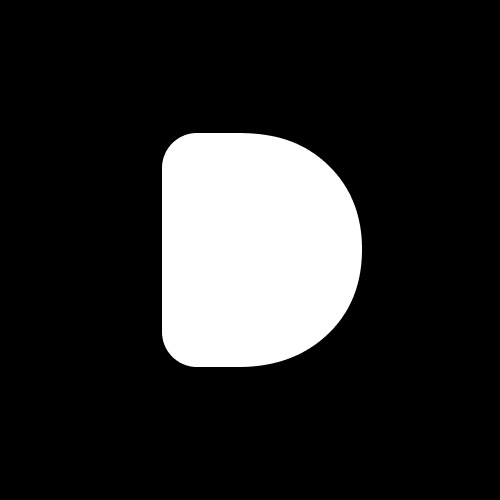
Editor
Designers Editorial Department
Designers help to enhance customers' branding with the motto of bringing the world to life through design.
We specialize in website development and application development.




